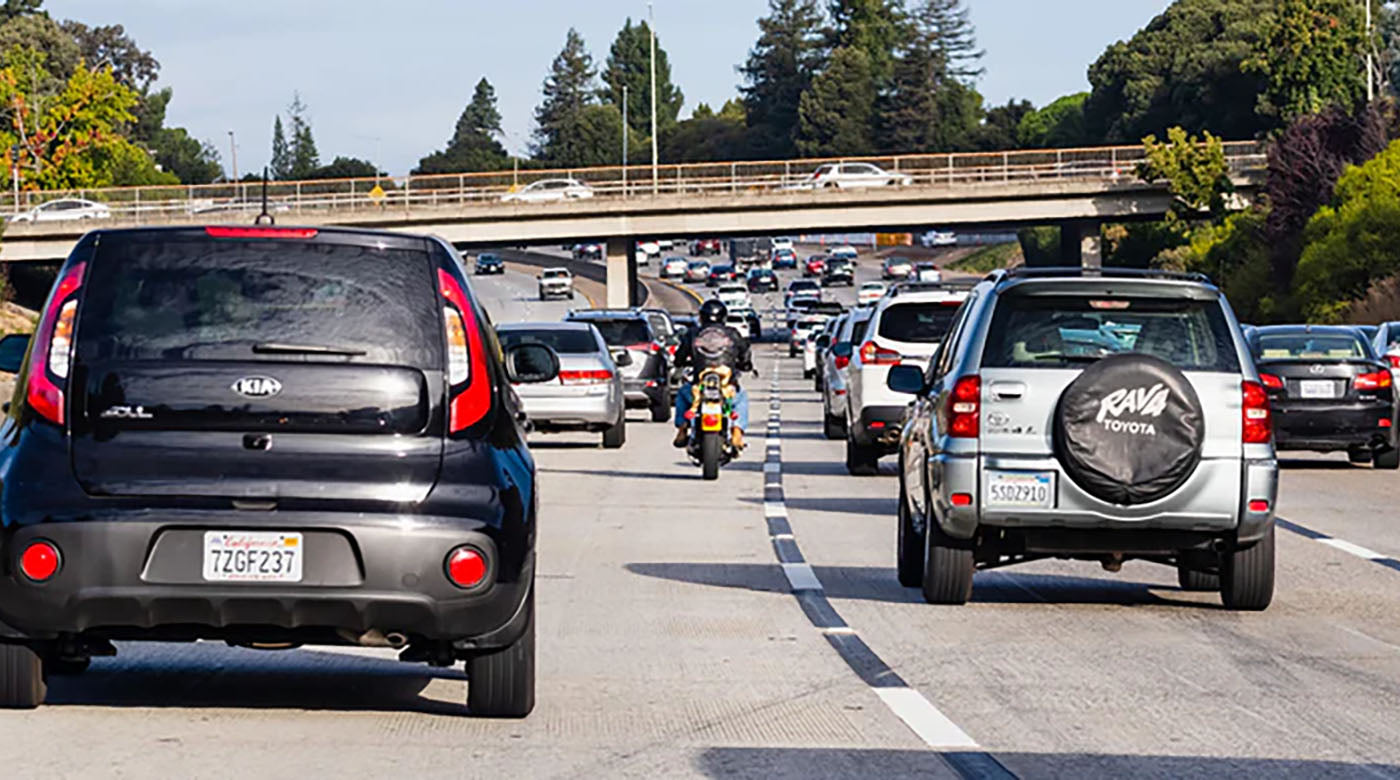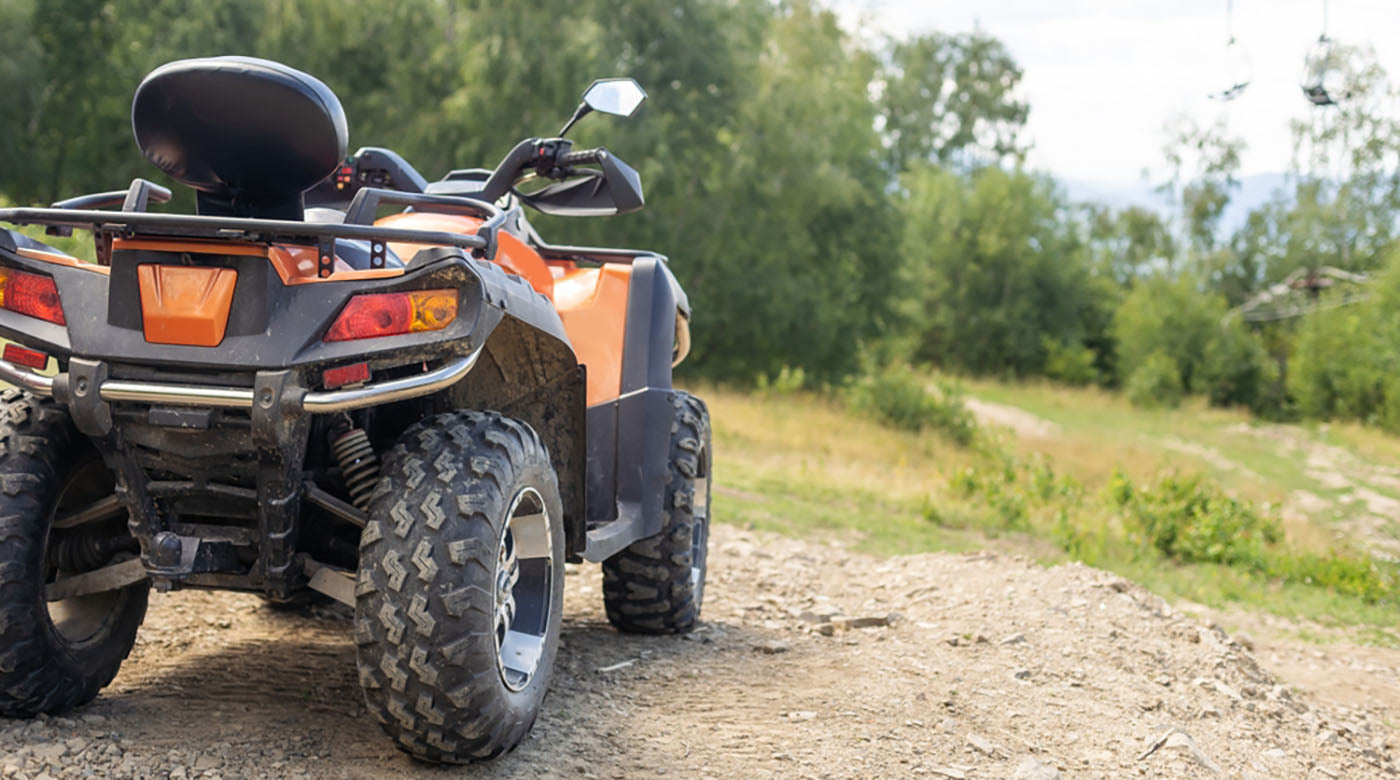If you like to weave through traffic on your motorcycle, you’re probably a fan of what’s known as lane splitting, which means riding on the white line instead of the middle of a lane. Also called lane sharing or lane filtering, this style of riding can help you get to your destination faster without waiting in traffic, but it’s only legal in a few states.
Effective communication during lane splitting is essential, particularly in busy traffic where blind spots and sudden lane changes by motorists can pose significant risks. Staying connected through advanced motorcycle communication systems ensures riders can warn each other of slow-moving traffic and impending dangers. In the event of a lane-splitting accident, having the ability to call for emergency assistance immediately can be lifesaving. Read on to learn how these systems can enhance your safety and awareness, including staying updated about lane-splitting laws.
What Is Lane Splitting?
Lane splitting is the practice of riding in between designated lanes of traffic, usually marked by a white or yellow line. Riders will usually split lanes during periods of heavy traffic, so they can drive past cars.
There are several benefits to lane splitting. The rider can move their motorcycle safely through traffic without waiting for the car ahead of them to move forward. A study from the University of California shows that lane splitting can be safer for motorcycle riders than riding in traditional lanes.
Most lane splitting is conducted at speeds less than 50 mph, significantly reducing the likelihood of motorcycle accidents and rear-end collisions. This lower speed threshold decreases the chances that motorcyclists will be hit by the car behind them, enhancing overall safety on the road.
Use Motorcycle Helmet Bluetooth Speakers to Stay Safe on the RoadMotorcycle Lane Splitting Advice
Before you decide to cruise along the line, keep these considerations in mind:
- Lane splitting can be dangerous in certain situations. There’s a chance you won’t have enough room to ride in between the cars on the road. You should always give yourself plenty of room to move through the lanes of traffic. Don’t try lane splitting on narrow or single-lane roads.
- You should never try this style of riding when going above 50 mph. If you are skipping through traffic, reduce your speed and look for a way to merge into a lane as the congestion subsides.
- Lane splitting near large vehicles can also be dangerous. They tend to have limited visibility, which increases the risk of collision. Avoid driving too close to trucks, buses and limos.
- Riding on the shoulder of the road is not the same as lane splitting and is usually considered illegal.
- If you’re considering cruising through traffic, remember to wear a helmet with Bluetooth. It will protect your head and help you access your phone in an emergency.
Where Is Lane Splitting Legal?
Lane splitting is legal in a few states, like California, Utah and Montana, with specific conditions. It remains illegal or in a legal gray area in most other states. Every state has its own rules in place, so be sure to check your state’s laws for more information.
The following states currently allow lane splitting:
California
This is the only state to fully legalize lane splitting, but you should still consider the situation and use caution when riding between lanes.
Utah
The state classifies lane splitting as “lane filtering” and is legal in certain situations. The other vehicles must be fully stopped, and you can’t go any faster than 45 mph.
Hawaii
The state doesn’t allow lane splitting but you can ride on the shoulder of the road when traffic congestion gets heavy.
Montana
The state allows lane splitting when vehicles are stopped or slow-moving. Your speed is limited to 20 mph.
The rest of the U.S., including Arizona, Texas, Virginia, Washington and more, doesn’t allow lane splitting at this time, so you’ll need to sit in traffic like everyone else. As motorcycling gains popularity, these traffic laws may change over time. Many states have introduced bills that would legalize lane splitting, but they have yet to go into effect. Researchers are learning more about the benefits of lane splitting, which could make it more common throughout the U.S. Continue to do your research over time to make sure you are complying with the law.
Outside of the U.S.
If you live outside the U.S., lane splitting may align with local motorcycle laws. In most European nations, lane splitting is legally recognized to some extent, often regulated by speed limit guidelines to ensure safety and reduce reckless driving. Countries like Mexico, Japan, Greece, Ireland, Singapore, South Africa and Taiwan also permit lane splitting, adapting the practice to the flow of motor vehicle traffic.
In some nations such as Thailand, Indonesia and Brazil, motorcycles are a primary mode of transportation, making lane splitting a common and legal maneuver. These regions often have specific regulations that motorcyclists must follow to navigate between lanes of slow-moving traffic safely. Understanding and respecting these rules helps to minimize accidents and enhances the efficiency of traffic movement, demonstrating the importance of being informed about the local motorcycle laws and conditions.
Staying Informed on Lane Splitting Laws
Lane splitting laws can vary significantly from one region to another and may change frequently, as illustrated by the recent legislative activities in Oregon.
Lane splitting was legalized in 2021 but vetoed later that year due to safety concerns about motorcycle and car accidents. Still, efforts continued with Senate Bill 422 in 2023, proposing specific conditions under which motorcyclists could split lanes. Despite passing the Oregon Senate with overwhelming support, the practice remains illegal as of September 2024. This example underscores the importance of riders staying informed about the current laws where they ride.
Motorcyclists are advised to check the status of lane splitting laws annually, especially at the start of the motorcycle season. Staying updated ensures compliance with local regulations and supports informed participation in legislative processes that could affect riding practices. Regularly reviewing these laws helps in planning safe and legal routes and advocating for changes that could benefit the riding community.
Enhance Communication for Lane Splitting with Cardo Systems
Maintaining clear communication is a must when lane splitting, especially in group rides. The Riser app and Packtalk Pro by Cardo Systems are designed to enhance this aspect of riding by providing a robust motorcycle intercom system. These tools help riders stay connected with their group, share real-time traffic updates and navigate congested areas safely and efficiently.
The Packtalk Pro offers advanced features for seamless communication, even in the complex environments typical of lane splitting. It integrates cutting-edge technology to ensure that every member of the riding group can hear and be heard clearly, regardless of the ambient noise or the speed at which they are traveling. This high level of clarity, provided by the Bluetooth motorcycle speakers, is essential for coordinating safe maneuvers and ensuring that all riders are promptly informed of any potential hazards or changes in riding conditions.
Get the Cardo Packtalk Pro Today!Lane splitting is a great way to get where you’re going in a hurry, but you should never put your safety at risk just to save time. Solutions from Cardo Systems let you access your phone hands-free while riding. You can call for help in an emergency without moving your arms or hands.





